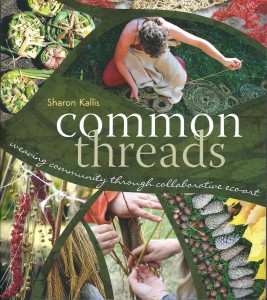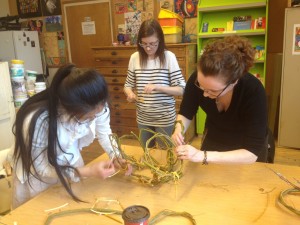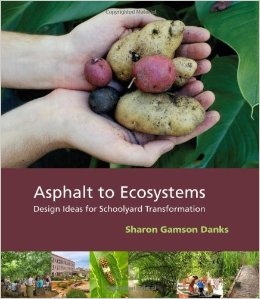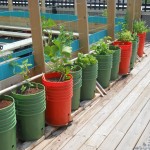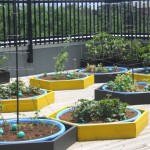
Garden & EcoArt Installed! 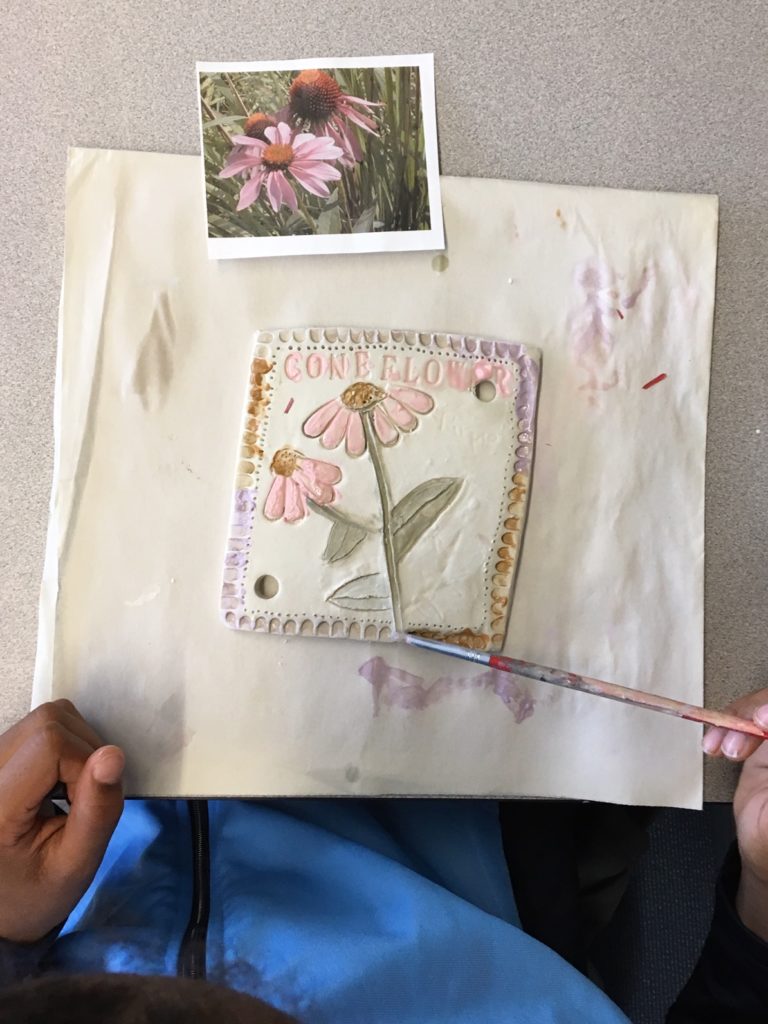
Working on glazing
With the return of spring last April, I was happy to work alongside students and teachers at Ryerson Community School (part of the Toronto District School Board) as they began to develop their school garden. They were excited to be working with one of our OISE graduate students, Mimi Ristin, to design and plant their own raised bed gardens filled with native plants, as well as to explore the types of trees in their schoolyard and local park. To help them remember the names of these plants and their benefits, we designed two art installations to share their learning with the school community. Three classes of younger children (grades 2&3) made over-sized clay leaves from native trees, and three more classes (grades 4-6) made clay relief tiles of native flowers. We used a high-fire porcelain clay (cone 6), which had a silky feel and proved to be easy for the children to work with (even though many had never worked with clay before). Rubber letters (such a great tool) were used to press the names of the flowers and trees into the tiles, effectively making these artworks into a visual field guide when installed altogether on the school fence. No doubt that having OISE teacher candidates Clara Hoover and Elena Viazmina help out made the project that much easier! Using natural materials (like clay) and installing outdoors are just two of the strategies for growing art in schoolyards – check out my new article about this in Art Education Journal in July 2019.

Making the clay leaves 
Clay leaves on the fence
